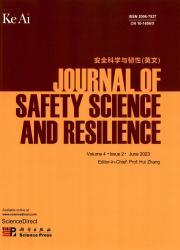Understanding the relationship between High Reliability Theory (HRT) of mindful organizing and Safety Management Systems (SMS) within the aerospace industry: A cross-sectional quantitative assessment
Abstract
There seems to be a paucity in extant literature that assesses the relationship between Safety Management Systems (SMS) and High Reliability Theory (HRT) behavior process of mindful organizing (MO) among aerospace organizations. There could be benefits for organizational safety by exploring this relationship in high-reliability organizations (HROs) like the aerospace industry. Using a modified Safety Organizing Scale (SOS) by Vogus and Sutcliffe (2007) and a validated SMS scale, the relationship between SMS and MO was measured. The perceptions of a cross-section of respondents from commercial airlines with SMS and commercial space licensees without SMS in the United States (U.S.) was assessed. A four-factor model of MO had acceptable fit. A model showing the relationship between SMS and MO had good fit and showed a high significant strength of relationship (r = 0.82, p = 0.000) with a big effect size. There were also significant differences in mean responses among management personnel and non-management personnel on the MO factor “sensitivity to operations” and the result suggests managers were better at identifying personnel with skills and knowledge to ensure safer task accomplishment than non-management personnel. The study results suggest that the SMS requirements for commercial airlines in the U.S. can enrich the identification and understanding of MO factors and it may be beneficial for the commercial space industry to formally adopt SMS. Future research studies may include direct comparisons in multiple aerospace organizations using a larger sample size to determine the overall understanding of MO factors and how it affects SMS.

 求助内容:
求助内容: 应助结果提醒方式:
应助结果提醒方式:


